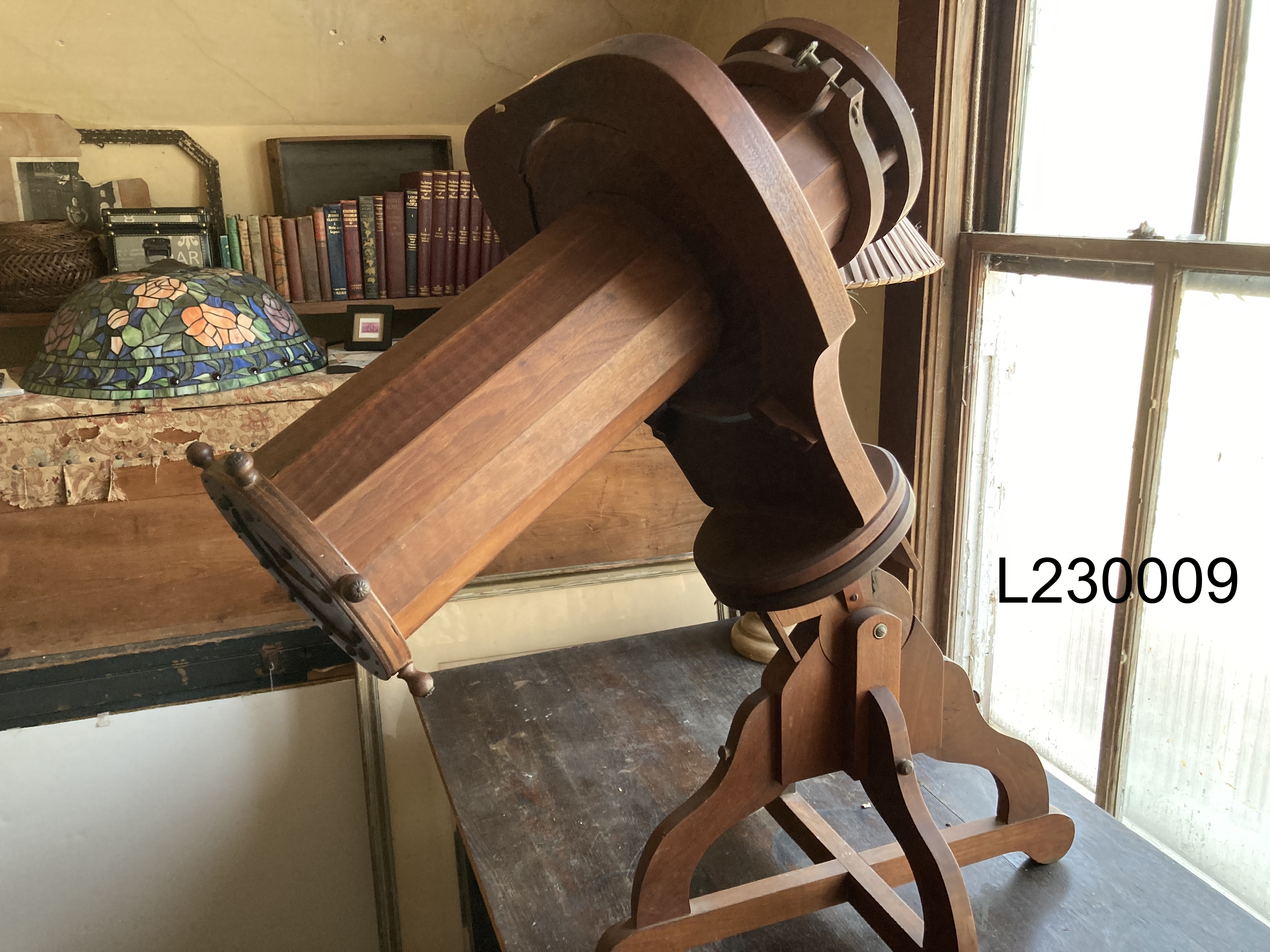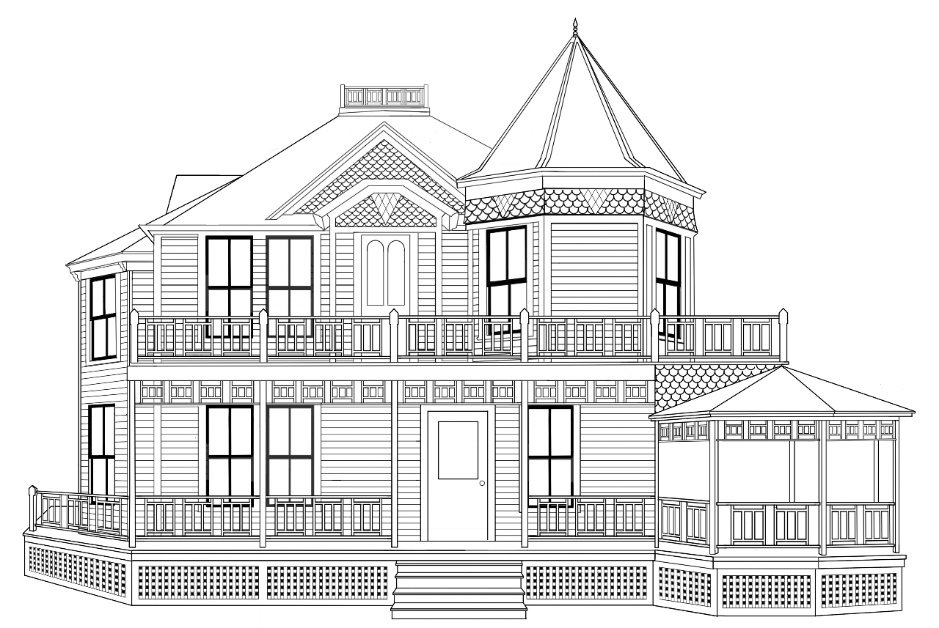L230009
Kaleidoscope
Kaleidoscope by Stanley Eskey (1941) 35"H
kaleidoscope, optical device consisting of mirrors that reflect images of bits of coloured glass in a symmetrical geometric design through a viewer. The design may be changed endlessly by rotating the section containing the loose fragments. The name is derived from the Greek words kalos (“beautiful”), eïdos (“form”), and skopeïn (“to view”).
The kaleidoscope was invented by Sir David Brewster about 1816 and patented in 1817. Sold usually as a toy, the kaleidoscope also has value for the pattern designer.
The kaleidoscope illustrates the image-forming properties of combined, inclined mirrors. If an object is placed between two mirrors inclined at right angles, an image is formed in each mirror. Each of these mirror images is in turn reflected in the other mirror, forming the appearance of four symmetrically placed objects. If the mirrors are inclined at 60°, a hexagonally symmetrical pattern results from one object producing six regularly placed images.
(From https://www.britannica.com/technology/kaleidoscope accessed 2023/05/11)
This particular item is said to have been handbuilt by Stanley Eskey about 1941/
The kaleidoscope was invented by Sir David Brewster about 1816 and patented in 1817. Sold usually as a toy, the kaleidoscope also has value for the pattern designer.
The kaleidoscope illustrates the image-forming properties of combined, inclined mirrors. If an object is placed between two mirrors inclined at right angles, an image is formed in each mirror. Each of these mirror images is in turn reflected in the other mirror, forming the appearance of four symmetrically placed objects. If the mirrors are inclined at 60°, a hexagonally symmetrical pattern results from one object producing six regularly placed images.
(From https://www.britannica.com/technology/kaleidoscope accessed 2023/05/11)
This particular item is said to have been handbuilt by Stanley Eskey about 1941/
Handbuilt item on loan
8
South Brevard Historical Society
Trunk Room
FALSE
TRUE
TRUE
FALSE
FALSE

